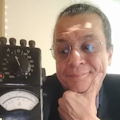Next-Gen Analog and Mixed-Signal Platform Goes Modular
What you'll learn:
- The need for more power across automotive, industrial, and AI data-center markets.
- How the Treo Platform addresses these power demands in advanced systems.
Ever-increasing power demands in automotive, industrial, and AI data-center markets, along with stricter environmental regulations, create a demand for greater energy efficiency without compromising performance and functionality. This is compounded by the growth in low-power devices such as medical wearables, which require more intelligence and higher efficiency.
Needless to say, demand for highly integrated power and sensing solutions that can deliver the intelligence and greater energy efficiency across the entire power spectrum continues to ramp up.
At the recent electronica show, onsemi introduced the analog and mixed-signal Treo Platform, which uses a bipolar-CMOS-DMOS (BCD) process technology on a 65-nm node to create a foundation for a range of power and sensing solutions. These high-performance solutions include low-power sensing, high-efficiency power management, and purpose-built communications devices.
The scalable platform is leveraged to simplify and accelerate product development and quickly respond to emerging market opportunities. It can address these demands for superior performance and features while supporting the industry’s widest voltage range on a leading node, according to onsemi, offering significant improvements in accuracy, performance, and efficiency.
In automotive applications, Treo high-performance ultrasonic sensors can improve accuracy by as much as a factor of two to detect objects closer to the vehicle in park-assist applications. Detecting objects at closer distances can provide improve collision avoidance and overall safety by helping drivers avoid obstacles more effectively.
In healthcare, ultra-low-power analog front ends (AFEs) for continuous glucose monitoring (CGM) devices are able to more accurately measure electrical currents down to the nanoampere level. This enables the detection of the tiny signals from glucose sensors, and integrating multiple functions into a single chip can cut the required footprint in half while extending battery life by weeks.
In data centers, the Treo Platform opens the door to compact smart power stages, enhancing the efficiency in power delivery for GPUs and CPUs. It also reduces cooling requirements and lowers operational costs.
The 65-nm-process Treo Platform offers a modular, system-on-chip (SoC)-like architecture with a set of IP building blocks for the compute, power-management, sensing, and communications subsystems to augment digital processing and analog IP performance. Able to deliver local intelligence and compute for flexible configuration, the platform can significantly improve performance and accuracy in end applications.
It supports a wide input voltage range from 1 to 90 V at operating temperatures up to 175°C to deliver solution-optimized and customized product portfolios. Initial products using the Treo Platform include voltage translators, ultra-low-power AFEs, LDOs, ultrasonic sensors, multiphase controllers, and single-pair Ethernet controllers.
Related links:
About the Author
Alix Paultre
Editor-at-Large, Electronic Design
An Army veteran, Alix Paultre was a signals intelligence soldier on the East/West German border in the early ‘80s, and eventually wound up helping launch and run a publication on consumer electronics for the US military stationed in Europe. Alix first began in this industry in 1998 at Electronic Products magazine, and since then has worked for a variety of publications in the embedded electronic engineering space. Alix currently lives in Wiesbaden, Germany.
Also check out his YouTube watch-collecting channel, Talking Timepieces.



